Product
Firmness
Score
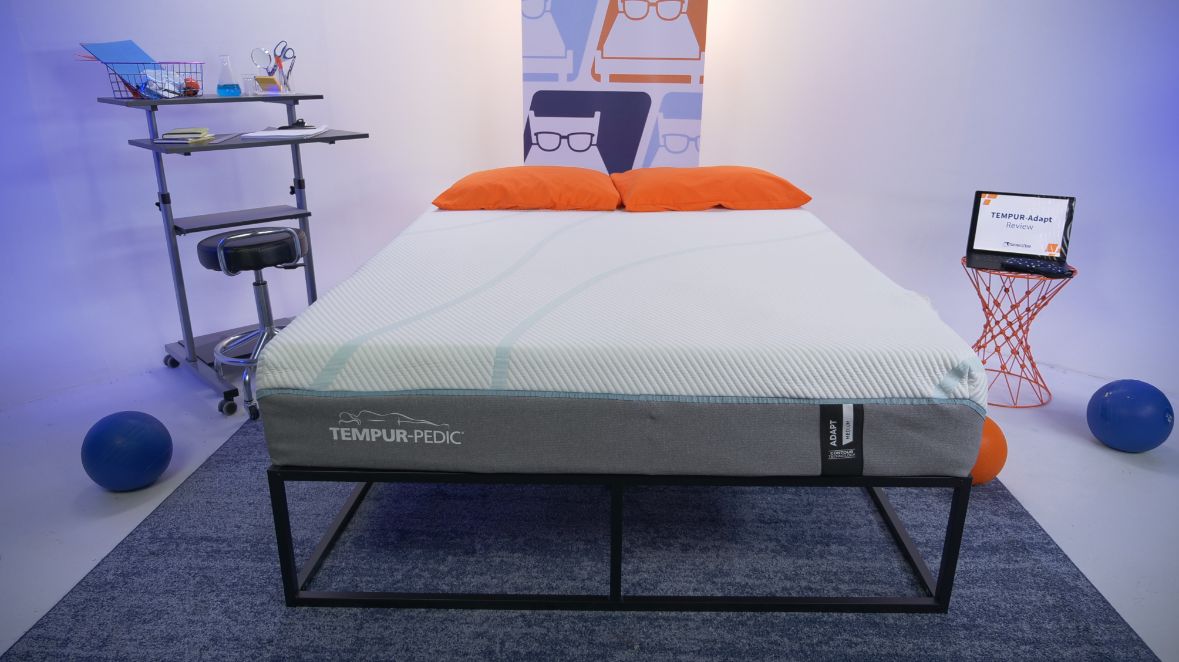
Product
Firmness
Score
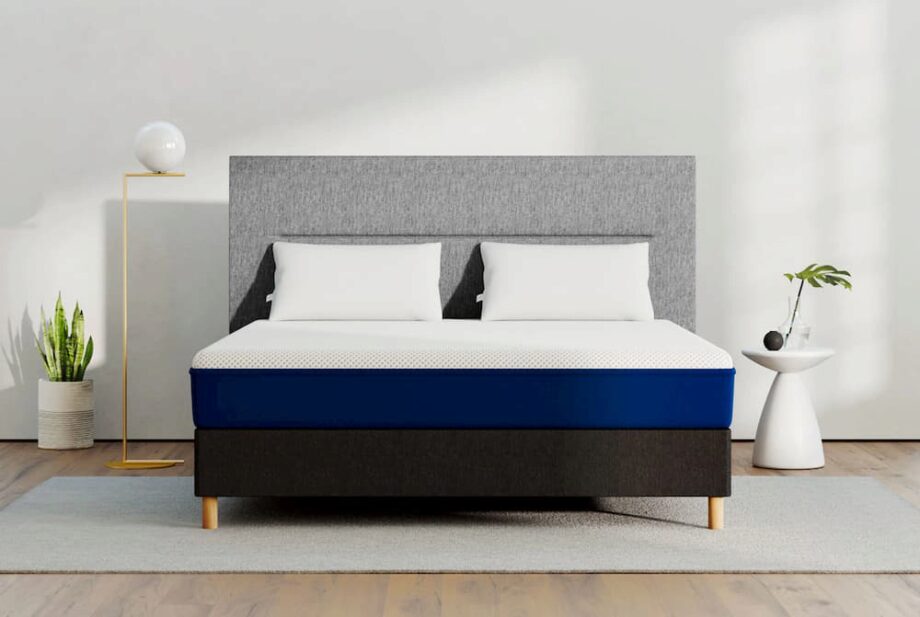
Disclosure: By clicking on the product links in this article, Mattress Nerd may receive a commission fee at no cost to you, the reader. Read full disclosure statement.
The Amerisleep mattress is a memory foam mattress that’s available as an all-foam or hybrid bed. The Tempur-Pedic mattress is available as a hybrid or strictly a memory foam mattress. Want to see which one is best for you? Read on to see our breakdown of these two fantastic options.


It features a memory foam layer on top for a feel that’s more responsive than average. It conforms to the body, yet it’s not too soft. The TEMPUR-Adapt is one of the most affordable Tempur-Pedic mattresses. But it’s still a luxury mattress with a traditional, viscous, memory foam feel available as a hybrid or a memory foam mattress.
| Amerisleep is best for… | Tempur-Pedic is best for… |
| People who like memory foam | Those who love traditional foam |
| Shoppers on a budget | Shoppers with large budget |
| Lightweight and average sleepers | Lightweight and average sleepers |
| People who wants an easy to clean mattress | People who sleep hot |
If you’re more of a visual person, check out our video review of Amerisleep vs. Tempur-Pedic mattress. We break down how this bed performs in key areas and lets you know who it’s best for.
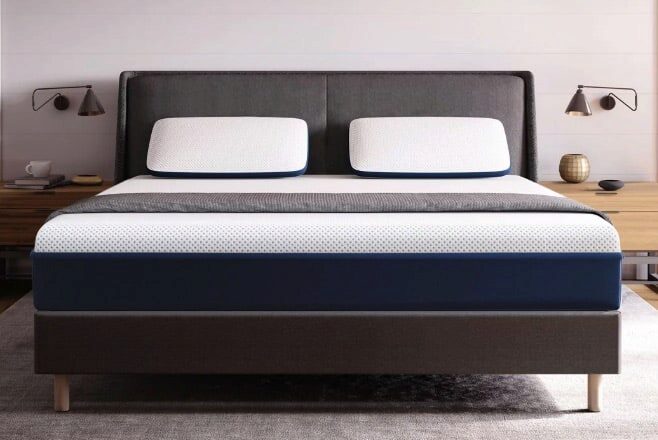
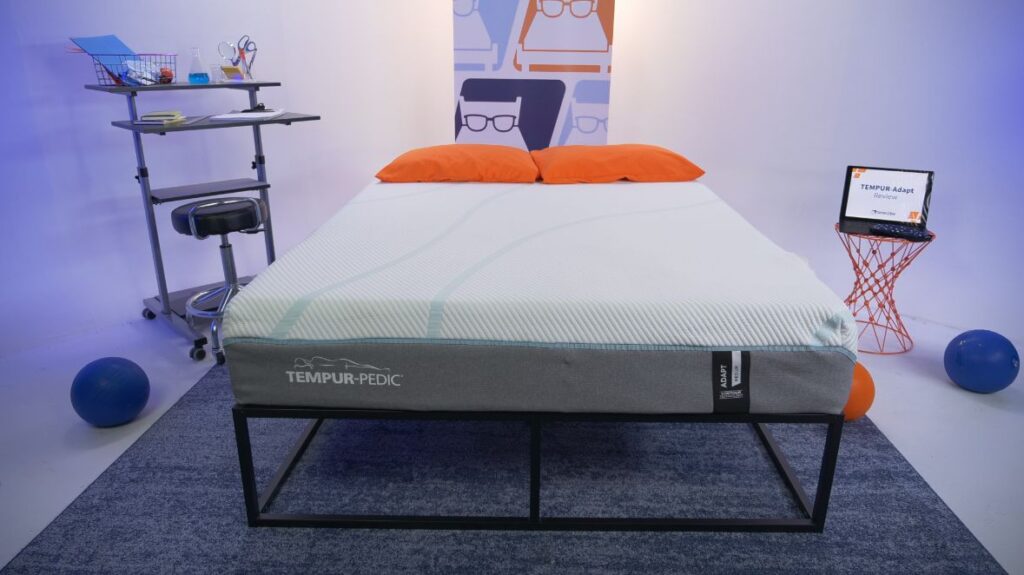
The Amerisleep AS3 and Tempur-Pedic TEMPUR-Adapt come in medium-firmness levels (5.5/10 and 5/10 on the firmness scale, respectively) in the hybrid and foam models.
The Amerisleep AS3 and Tempur-Pedic TEMPUR-Adapt come in medium-firmness levels (5.5/10 and 5/10 on the firmness scale, respectively) in the hybrid and foam models. The Amerisleep AS3 may feel medium-firm if you’re a petite or lightweight sleeper. While Tempur-Pedic makes beds with multiple firmness options; the TEMPUR-Adapt is only available in a single setting.
The Amerisleep mattress is a memory foam mattress that’s available as an all-foam or hybrid bed. It features a memory foam layer on top for a feel that’s more responsive than average. It conforms to the body, yet it’s not too soft. The TEMPUR-Adapt is one of the most affordable Tempur-Pedic mattresses. But it’s still a luxury mattress with a traditional, viscous, memory foam feel available as a hybrid or a memory foam mattress.
An average-weight side sleeper who prefers a mattress that is neither too soft nor too firm to the touch. Sleepers in this weight category tend to experience mattresses “as so,” meaning a firm mattress will feel firm and a soft mattress will feel soft. Most side sleepers require pressure relief at the hips and shoulders, which can be achieved through thicker top comfort layers that conform to the body and may give the bed a plusher feel. Average-weight sleepers will probably do well with a firmness setting that’s medium-soft or medium, which will provide the body with the support and contouring it needs while satisfying the sleeper’s personal firmness preferences. However, larger stomach sleepers need additional support from a firmer mattress; see our pick for the best mattress for stomach sleepers for better choices.
AS3 Performance By Body Type & Sleeping Position:
| Body Type: | BACK SLEEPERS | STOMACH SLEEPERS | SIDE SLEEPERS |
| Lightweight (< 130 lbs): | 5 | 4 | 2 |
| Average-weight (130–230 lbs): | 5 | 3 | 4 |
| Heavyweight (> 230 lbs): | 2 | 2 | 2 |
Tempur-Pedic Performance By Body Type & Sleeping Position:
| Body Type: | BACK SLEEPERS | STOMACH SLEEPERS | SIDE SLEEPERS |
| Lightweight (< 130 lbs): | 5 | 5 | 3 |
| Average-weight (130–230 lbs): | 5 | 4 | 3 |
| Heavyweight (> 230 lbs): | 5 | 4 | 2 |
The medium firmness of the AS3 will work well for average-weight back sleepers. For side sleepers, it will be able to maintain your spinal alignment and provide relief on pressure points like shoulders and hips while the average-weight stomach sleepers will want something firmer. The AS3 is a very responsive mattress so it’s bouncy and feels like you’re sleeping on top of the bed, rather than sinking into it. This mattress should work well for combination sleepers.
The Tempur-Adapt has the contouring relief of memory foam and the support of a firmer mattress, this bed is really the best for back sleepers of all sizes. Next up, side sleepers do best on mattresses that are softer so this caters to everybody regardless of weight. Since the Tempur-Adapt is one of the more solid foam mattresses, average stomach sleepers will find it plenty firm, but some combination sleepers may find it less than ideal as it feels more sinking than responsive.
Heavyweight back sleepers will likely want something a little firmer and more supportive, such as the AS3 Hybrid mattress or another bed that uses coils in its construction, the same with side sleepers and stomach sleepers who might not get enough support from this all-foam bed. For heavyweight combination sleepers, a firmer and more supportive bed will be better.
For back and side sleepers, the Tempur-Adapt is really the best of both worlds as you’re likely to run into pressure-point issues on this bed. Although heavyweight stomach sleepers and combination sleepers may want even more firmness and a bed that’s more responsive.
The medium firmness of the AS3 will work well for back sleepers, while side sleepers will probably find the mattress to be too firm. On the contrary, stomach sleepers will be comfortable and supported the same with some lightweight combination sleepers, depending on which positions you sleep in most.
The Tempur-Adapt has the contouring relief of memory foam and the support of a firmer mattress, this bed is perfect for back sleepers and side sleepers. Since it is on the firm side, it will be fit for stomach sleepers who need to keep their hips from sinking down compared to combination sleepers who may find it feeling more sinking.
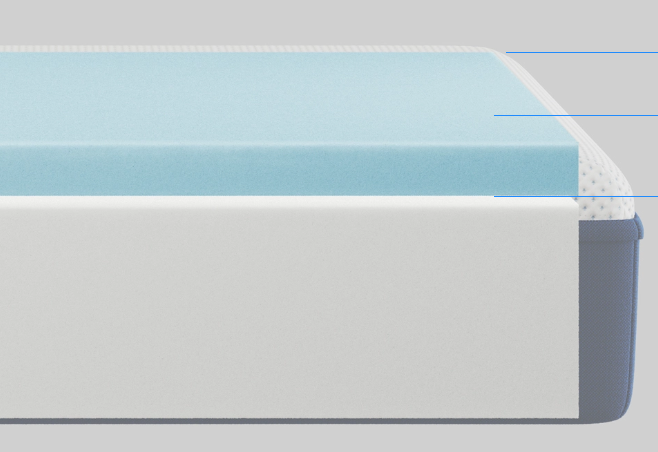
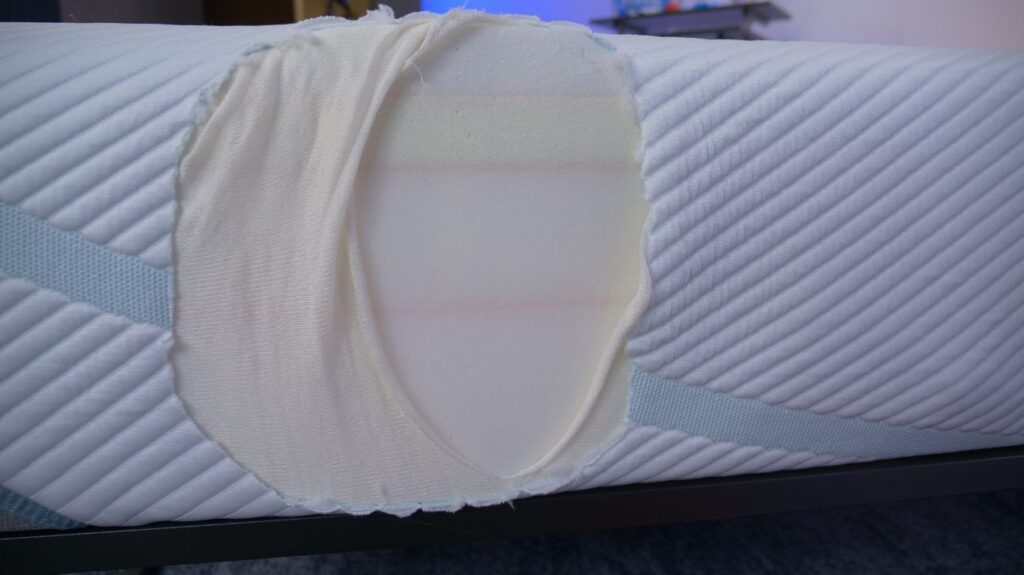
Both sporting an 11’’ thick mattress, the AS3 by Amerisleep is a memory foam mattress that’s available as an all-foam bed or as a hybrid bed. The TEMPUR-Adapt is a memory foam mattress that’s also available in all-foam and hybrid versions. Both models feature a cool-to-the-touch SmartClimate cover that helps the mattress sleep cool.
| XYZ Mattress Materials | ABC Mattress Materials |
| Proprietary Cooling Material | SmartClimate Cover |
| Memory Foam | Memory Foam |
| 2” polyfoam | Transitional polyfoam |
| 7” high-density polyfoam | High-density polyfoam |
The AS3 has a 3” top layer that gives the bed its medium-firmness setting and allows for close conforming, while the TEMPUR-adapt features a cool-to-the-touch SmartClimate cover that helps the mattress sleep cool.
The Bio-Pur foam also has an open-cell structure, which makes it more breathable than traditional memory foam and makes the Amerisleep AS3 more responsive overall. The Tempur-Pedic has a TEMPUR-ES memory foam in both models, which contours closely to the body and gives the mattresses their signature Tempur-Pedic feel.
The core of AS3 is 7 inches of Bio-Core foam. This is a high-density polyfoam that is sturdy and supportive, helping to encourage overall durability for the mattress and provide support for most body types while TEMPUR-Adapt features a second layer of high-density polyfoam, or TEMPUR Support foam, which provides a firmer foundation for sleepers.
| Size | Amerisleep Prices | Tempur-Pedic Prices |
| Twin | $1099.00 | $1999.00 |
| Twin XL | $1149.00 | $1999.00 |
| Full | $1299.00 | $2349.00 |
| Queen | $1349.00 | $2499.00 |
| King | $1649.00 | $3199.00 |
| California King | $1649.00 | $3199.00 |
For exclusive discounts on both beds, see our Amerisleep mattress coupons and Tempur-Pedic mattress coupons.
A mattress’s ability to stay cool or maintain a neutral temperature is essential for sleepers who get hot at night. Cooling can be achieved through a variety of measures ranging from construction, proprietary cooling foams and covers. Hybrid mattresses and innerspring beds sleep cooler than foam beds, with many of them featured on our list of the best mattresses for back hot sleepers.
The AS3’s Refresh Cooling Cover should provide relief for hot sleepers throughout the night. If you’re on a budget and sleep hot, we recommend the AS3 hybrid, with a pocketed coil core that allows more airflow throughout the night.
The TEMPUR-Adapt features the brand’s SmartClimate cover in both the hybrid and the all-foam versions, which feels cool to the touch. While the Adapt won’t sleep as cool as Tempur-Pedic’s specialty cooling models, the LUXEbreeze and the PRObreeze, we recommend the Adapt for people who want the most affordable Tempur-Pedic model and enjoy sleeping on a bed that’s going to be a few degrees cooler than competing models.
Motion isolation refers to how much motion transfer occurs when someone gets in and out of bed or changes positions on the mattress. This performance quality is key if you sleep with a partner, pet, or child and wake easily to movement throughout the night.
The all-foam versions of the AS3 and the TEMPUR-Adapt perform exceptionally well when it comes to distilling motion, with the TEMPUR-Adapt having a slight edge on the foam AS3 because of its ultra-viscous memory foam layer–a key component in the best mattress for couples.
The hybrid versions of the AS3 and the TEMPUR-Adapt will not isolate motion as well, which is to be expected because of their responsive pocketed coil cores.
All beds are subject to sagging and indentations over time, but the rate at which this occurs is important to consider if you find it hard to get in and out of bed, or sleep with a partner and like to spread out (sleep close to the edges of the bed). Edge support can be achieved in a variety of ways, ranging from foam edge reinforcements to pocketed coils.
The hybrid TEMPUR-Adapt offers the best edge support, thanks to a reinforced foam layer along the edges of the pocketed coils. The TEMPUR-Adapt foam, AS3 foam, and AS3 hybrid will not encourage edge support because none of these models have materials or construction features to mitigate sinking along the edges.
All sleeper types are prone to develop pressure points in areas where the body comes into close contact with the top layers of the mattress. Side sleepers, for example, experience pressure points at the hips and shoulders. Pressure points aren’t a problem unless they begin to cause or worsen aches and pains.
All-foam beds tend to offer the best pressure relief, as their low-density, plush top layers provide cushioning around the sleeper’s body as it sinks into the mattress, which equates to contouring areas where it’s needed the most. Firmer mattresses, as well as innerspring beds and some hybrid beds, don’t tend to offer much pressure relief.
The AS3 and TEMPUR-Adapt both offer above-average pressure relief, thanks to memory foam and proprietary foam layers designed to sink beneath the sleeper’s body for targeted pain and pressure relief. We think the TEMPUR-Adapt beats the AS3 just barely in this category, because its top comfort foam is more viscous and contouring than the AS3’s slightly more responsive comfort foam.
A bed’s ability to achieve proper spinal alignment is judged by how well a sleeper’s spine can maintain its natural “S” curve in their sleeping position of choice. The ability to achieve spinal alignment on any mattress depends on the mattress’s firmness and top comfort layers, as well as your own body weight and sleeping positions.
As a rule, firm mattresses are some of the best mattresses for back sleepers and stomach sleepers, because they distribute weight evenly and prevent the hips and shoulders from sinking for proper spinal alignment. Side sleepers tend to fare better on more plush mattresses, which allow the hips and shoulders to sink so that the spine can rest in a straight line laterally. If your mattress doesn’t help you achieve proper spinal alignment, you may experience back pain and aches in other areas of the body.
Most mattresses last from seven to 10 years. Foam mattresses are more prone to sagging, indentations, and faster breakdown because of their materials. Innerspring and hybrid mattresses tend to last the longest. We don’t think the Amerisleep or Tempur-Pedic mattresses will have issues when it comes to durability; both brands’ products have average or above-average lifespans for all-foam and hybrid mattresses. If you experience trouble or notice a defect within the time of ownership, Amerisleep has a 20-year warranty, and Tempur-Pedic has a 10-year warranty.
The Amerisleep AS3 ships free as a bed-in-a-box, and you might need to give it two or three days to fully expand after unboxing. Once the mattress arrives at your home, you’ll get a 100-night sleep trial. The first 10 years is a full replacement warranty.
The TEMPUR-Adapt mattress ships free as a full-sized-box, and you might need to give it two or three days to fully expand after unboxing. Once the mattress arrives at your home, you’ll get a 90-night sleep trial. The first 10 years is a full replacement warranty.

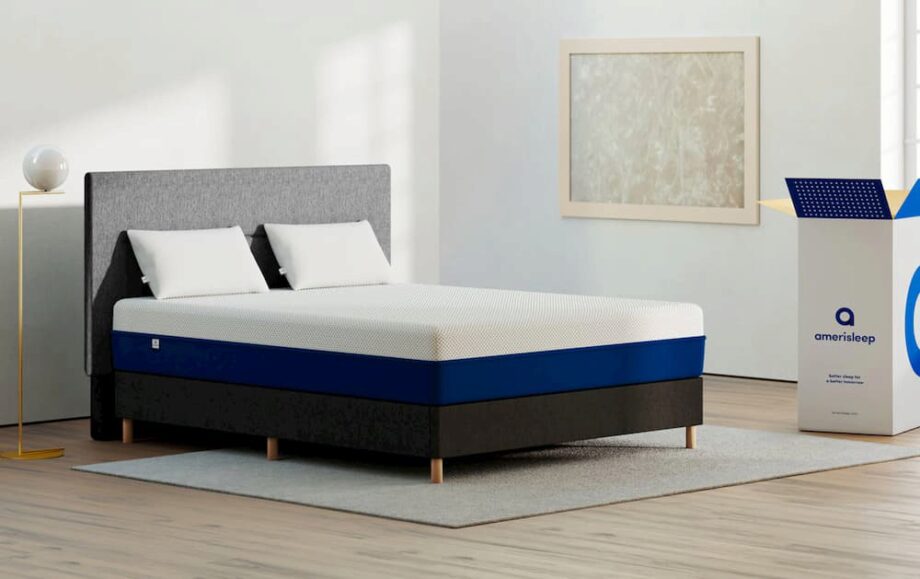
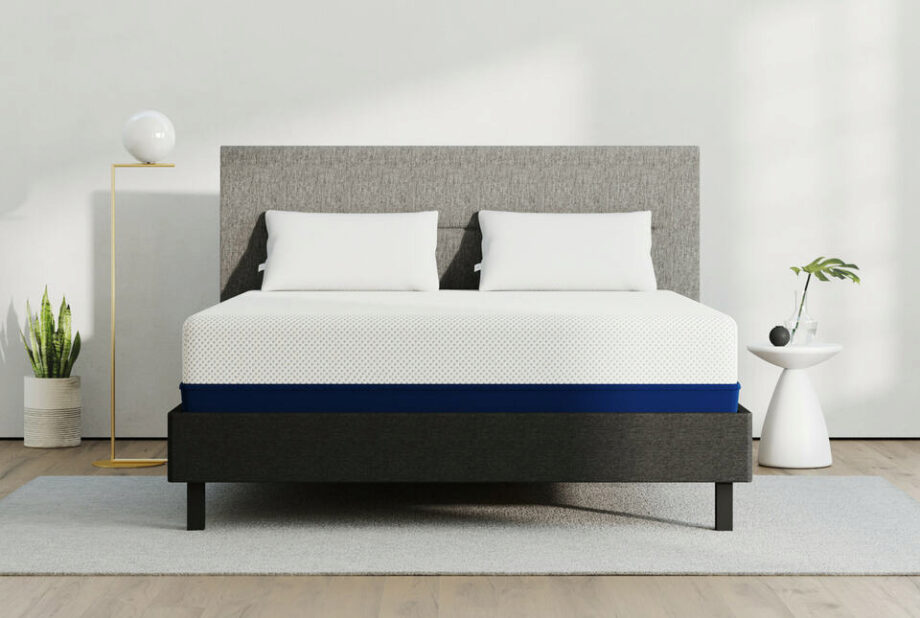
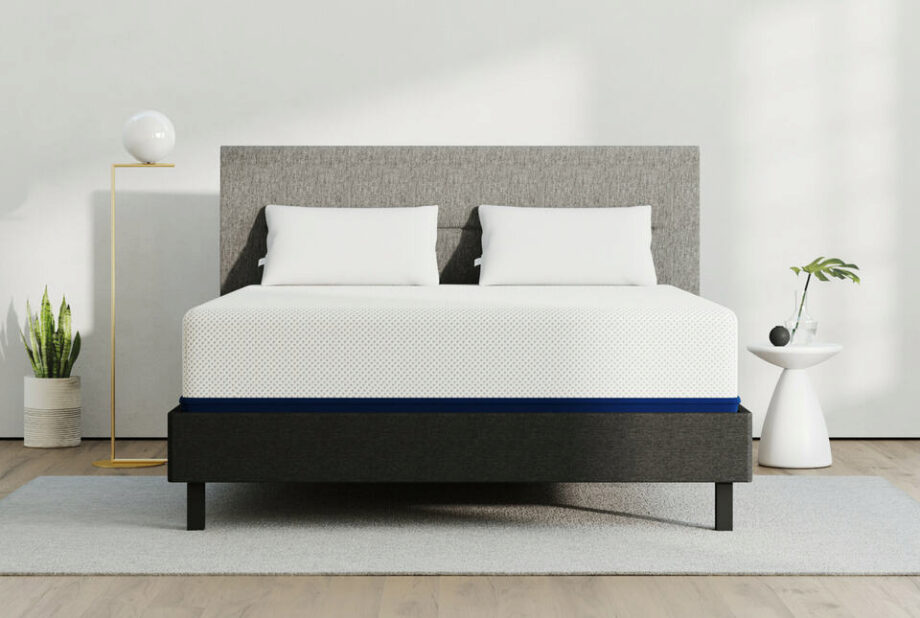
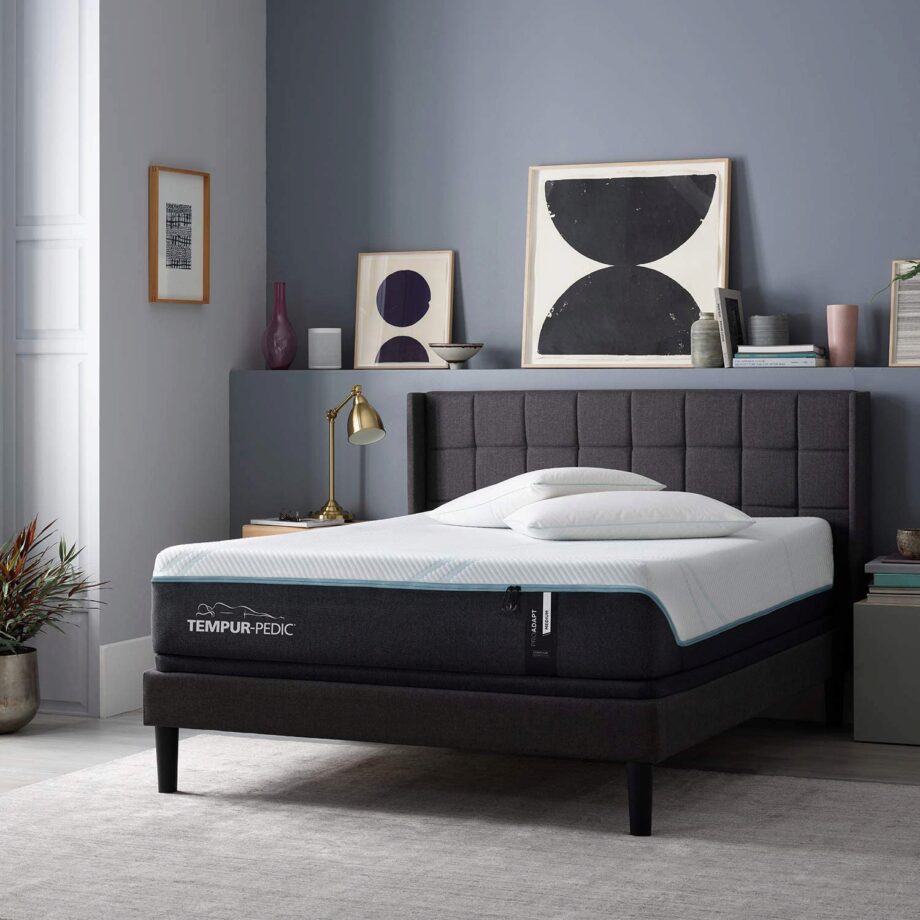
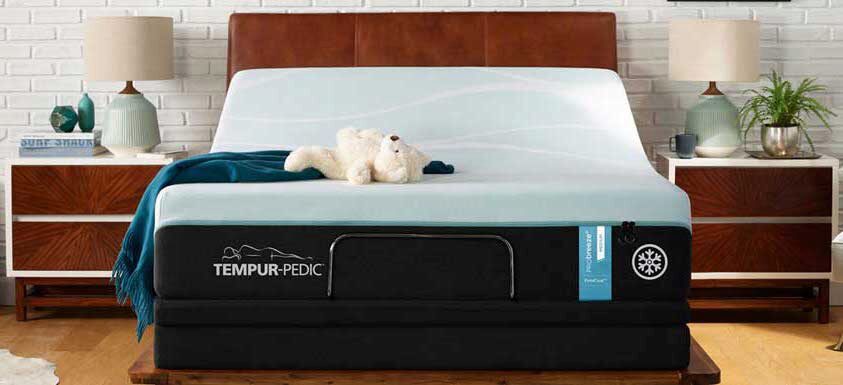
At the end of the day, these are both memory foam beds, and they’re made by two of the most trustworthy mattress brands on the market. Which is the best mattress for you? We recommend the Amerisleep if you like a more responsive memory foam feel and need the most affordable option. Go with Tempur-Pedic if you want a traditional memory foam feel, need exceptional cooling, or already love the Tempur-Pedic brand and believe its mattresses are worth the price. Want to learn more information about each bed before deciding which is the right new mattress for you? Check out our individual mattress reviews.
Amerisleep mattresses are CertiPUR-US certified and made without formaldehyde, ozone-depleting chemicals, prohibited phthalates, PBDEs, mercury, lead, or other heavy metals. This reduces the off-gassing found with other foam mattresses.
Generally, a higher quality and more expensive TempurPedic Mattress will last you 8-10 years while a lesser quality TempurPedic Mattress can last 5-8 years. Overall, the normal lifespan of a TempurPedic Mattress hovers around six years before replacement.
Pricing varies by model and size. The Twin Tempur-Adapt costs $1,699, and the Queen Tempur-Adapt is more budget friendly and mid-priced, starting at $2,199. Head on to our pricing page to know about the exact prices.